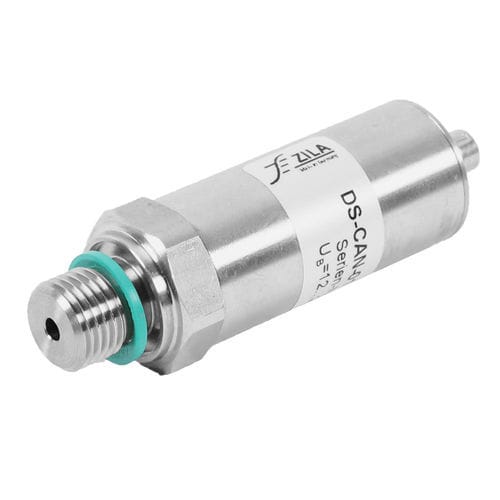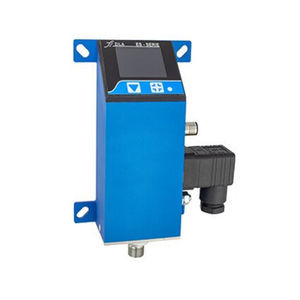
- Detection - Measurement
- Flow, Pressure and Level Measurements
- Relative pressure transmitter
- Fluid.iO Sensor + Control GmbH & Co. KG
Relative pressure transmitter DS-CAN-01piezoresistivemembraneCAN Bus




Add to favorites
Compare this product
Characteristics
- Pressure type
- relative
- Technology
- membrane, piezoresistive
- Output
- CAN Bus
- Mounting
- DIN rail
- Fluid
- for natural gas, for compressed air, for oil, for diesel
- Material
- stainless steel
- Protection level
- EMC
- Applications
- for hydraulic applications
- Pressure range
Max.: 4,000 bar
(58,015.1 psi)Min.: 0 bar
(0 psi)- Precision
0.5 %
- Process temperature
Max.: 120 °C
(248 °F)Min.: -40 °C
(-40 °F)
Description
The sensor is electronically calibrated and the data is stored digitally. This ensures good long-term stability and accuracy of the pressure transmitter with CAN bus signal output. The pneumatic or hydraulic sealing is done by means of standard flat seals or O-rings. (See also DIN) The permissible tightening torque is 25 Nm.
Sensor cell based on a stainless steel membrane (without intermediate medium) with piezoresistive bridge circuit made of polysilicon
Integrated sensor signal processing (CMOS technology)
All parts in contact with the measured medium are made of the following materials:
No O-ring, no silicone oil
The CAN-Bus pressure transmitter contains only a few active components: a stainless steel diaphragm, the sensor element, a CMOS ASIC for calibration and storage of the calibration values, for signal processing and CAN-BUS operation, a microcontroller and some standard components.
Special characteristics
Sensor cell based on a stainless steel diaphragm (without intermediate medium) with piezoresistive bridge circuit of polysilicon
Technical Data
technical properties
Pressure type
Relativdruck gegen Umgebungsdruck bzw. gegen interne Atmosphäre
EMC/ESD
EN 50082-1 und EN 50082-2
Duration
14 ms bei RT
VIDEO
Catalogs
Other Fluid.iO Sensor + Control GmbH & Co. KG products
pressure measurement
Related Searches
- Pressure transmitter
- Level limit switch
- Liquid level limit switch
- Level probe
- Liquid level probe
- Pressure switch
- Stainless steel pressure transmitter
- Relative pressure transmitter
- Membrane pressure transmitter
- Float level switch
- Analog level probe
- Level transmitter
- Liquid level transmitter
- Digital pressure transmitter
- Gas pressure transmitter
- Leakage detector
- Liquid pressure transmitter
- Analog level transmitter
- Flow sensor
- Liquids level indicator
*Prices are pre-tax. They exclude delivery charges and customs duties and do not include additional charges for installation or activation options. Prices are indicative only and may vary by country, with changes to the cost of raw materials and exchange rates.




